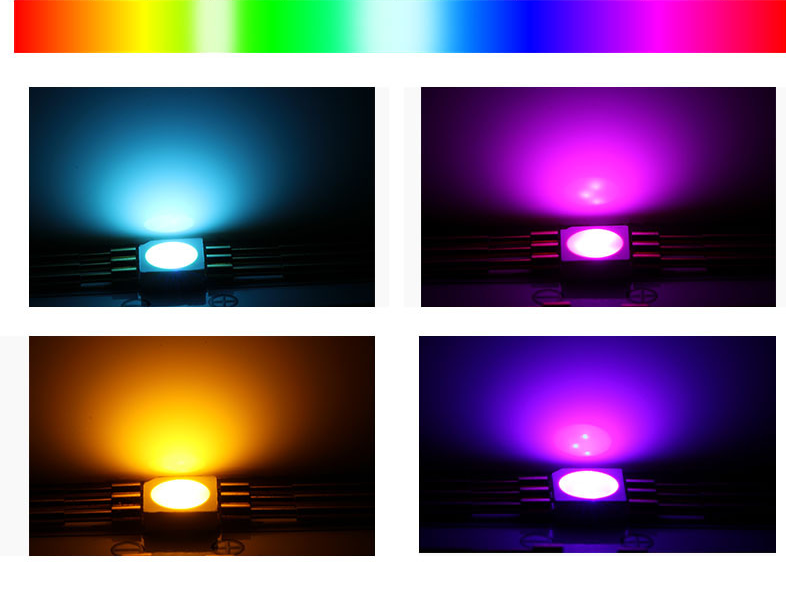LEDs have revolutionized the lighting industry, offering brighter, longer-lasting, and more energy-efficient options than traditional incandescent and fluorescent bulbs. From the tiny LEDs illuminating our smartphones to the massive LED screens captivating audiences in Times Square, these versatile lights have transformed how we illuminate our homes, offices, and public spaces.
Introduction to LEDs: Light-Emitting Diodes (LEDs) are semiconductors that emit light when an electric current passes through them. Unlike traditional incandescent bulbs, which rely on heating a filament to produce light, LEDs generate light through electroluminescence—a process where electrons recombine with holes in the semiconductor material, releasing energy as photons (light).
How LEDs Work:
- Semiconductor Basics: LEDs are made from a combination of semiconductor materials, typically involving elements like gallium, arsenic, and phosphorus. These materials are doped with impurities to create two regions: a p-type (positive) and an n-type (negative) semiconductor.
- P-N Junction: The interface where these two regions meet is called the p-n junction. When a voltage is applied across the LED, electrons move from the n-type region to the p-type region, where they recombine with holes, releasing energy as light.
- Color of Light: The color of the light emitted by an LED depends on the energy gap of the semiconductor material used. This gap determines the wavelength of the emitted photons, which corresponds to specific colors of light.
Advantages of LEDs:
- Energy Efficiency: LEDs are highly energy-efficient, converting a higher percentage of electrical energy into light compared to traditional light sources. This results in lower energy consumption and reduced electricity bills.
- Long Lifespan: LEDs have a much longer lifespan than incandescent or fluorescent bulbs. They can last up to 50,000 hours or more, significantly reducing the need for frequent replacements.
- Durability: LEDs are solid-state devices, making them more resistant to shocks, vibrations, and external impacts. This makes them ideal for use in various environments, including outdoor and industrial settings.
- Environmental Impact: LEDs are more environmentally friendly as they contain no toxic materials like mercury, commonly found in fluorescent bulbs. Additionally, their long lifespan reduces waste.
- Instant Lighting: LEDs turn on instantly without the warm-up time needed by some other light sources, making them suitable for applications where instant illumination is required.
- Design Flexibility: LEDs are small and can be used in a wide variety of applications, from small indicator lights to large-scale displays and lighting systems. They can be easily integrated into various designs and applications.
Types of LEDs:
- Indicator LEDs: Small LEDs used in devices as indicator lights, showing status or providing feedback.
- High-Power LEDs: Used in applications requiring high light output, such as street lighting, automotive headlights, and industrial lighting.
- SMD LEDs (Surface-Mounted Device): Compact and highly efficient LEDs used in LED strips, displays, and various consumer electronics.
- COB LEDs (Chip on Board): Consist of multiple LED chips mounted on a single substrate, providing high light output and efficiency, commonly used in downlights and floodlights.
- RGB LEDs: Capable of producing a wide range of colors by combining red, green, and blue light. Commonly used in decorative lighting and displays.
- RGBW and RGB-CCT LEDs:
- RGBW LEDs: Include an additional white LED chip, allowing for more accurate white light and a broader color palette.
- RGB-CCT LEDs: Feature adjustable color temperature, allowing for dynamic control over both color and warmth of the light, making them versatile for both ambiance and task lighting.
- Smart LEDs: Integrated with smart home systems, allowing for remote control, automation, and customization through apps or voice commands.

Applications of LEDs:
- Residential Lighting: LEDs are widely used in homes for general lighting, accent lighting, and under-cabinet lighting due to their energy efficiency and versatility.
- Commercial Lighting: LEDs are used in offices, retail spaces, and warehouses, providing cost-effective and long-lasting lighting solutions.
- Automotive Lighting: LEDs are commonly used in headlights, taillights, and interior lighting in vehicles due to their durability and brightness.
- Displays and Screens: LEDs are used in various display technologies, including television screens, computer monitors, and digital billboards.
- Street and Outdoor Lighting: LEDs provide efficient and reliable lighting for streets, parking lots, and outdoor spaces, reducing energy consumption and maintenance costs.
- Specialized Applications: LEDs are used in medical devices, horticultural lighting, UV curing, and other specialized applications due to their specific light properties.
Challenges and Considerations:
- Heat Management: While LEDs are more efficient than traditional bulbs, they still generate heat. Proper heat management through heat sinks or other cooling methods is essential to maintain performance and longevity.
- Initial Cost: LEDs have a higher upfront cost compared to incandescent or fluorescent bulbs. However, their energy savings and long lifespan usually offset this over time.
- Color Rendering: While LEDs have improved significantly, some models may not render colors as accurately as other light sources. It’s essential to consider the Color Rendering Index (CRI) when selecting LEDs for applications where color accuracy is critical.
- Dimming: Not all LEDs are compatible with dimmers. It’s important to choose LED bulbs and dimmers that are designed to work together to avoid flickering or reduced performance.
Future of LEDs:
The LED industry continues to innovate, with advancements in efficiency, color accuracy, and smart integration. Future trends include the development of micro-LEDs for displays, increased adoption of tunable white LEDs for human-centric lighting, and further reductions in costs, making LEDs accessible for a broader range of applications.
Conclusion:
LEDs have revolutionized the lighting industry with their energy efficiency, longevity, and versatility. As technology advances, LEDs are expected to play an even more significant role in various aspects of our daily lives, from lighting to displays and beyond. Understanding the fundamentals of LEDs helps in making informed decisions whether you’re a consumer, designer, or engineer.



